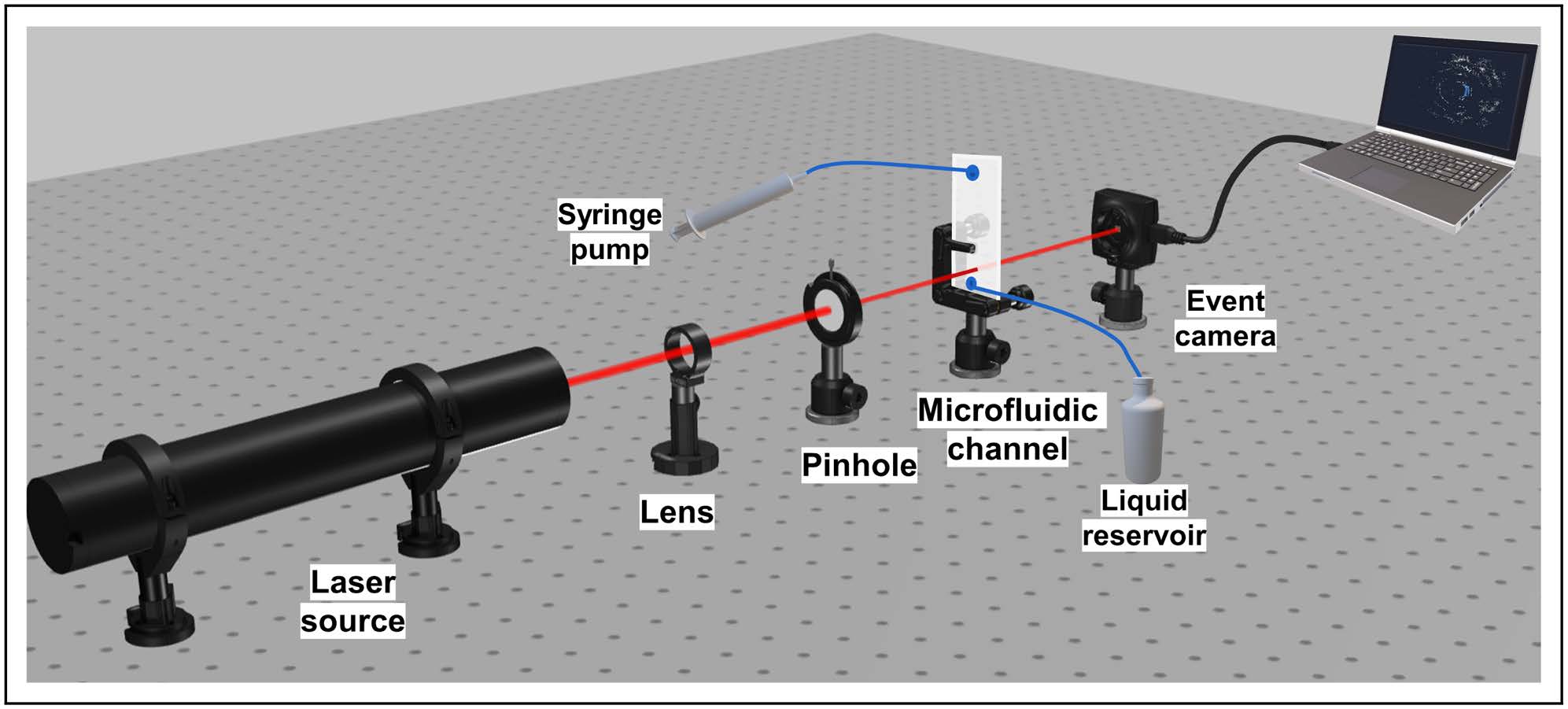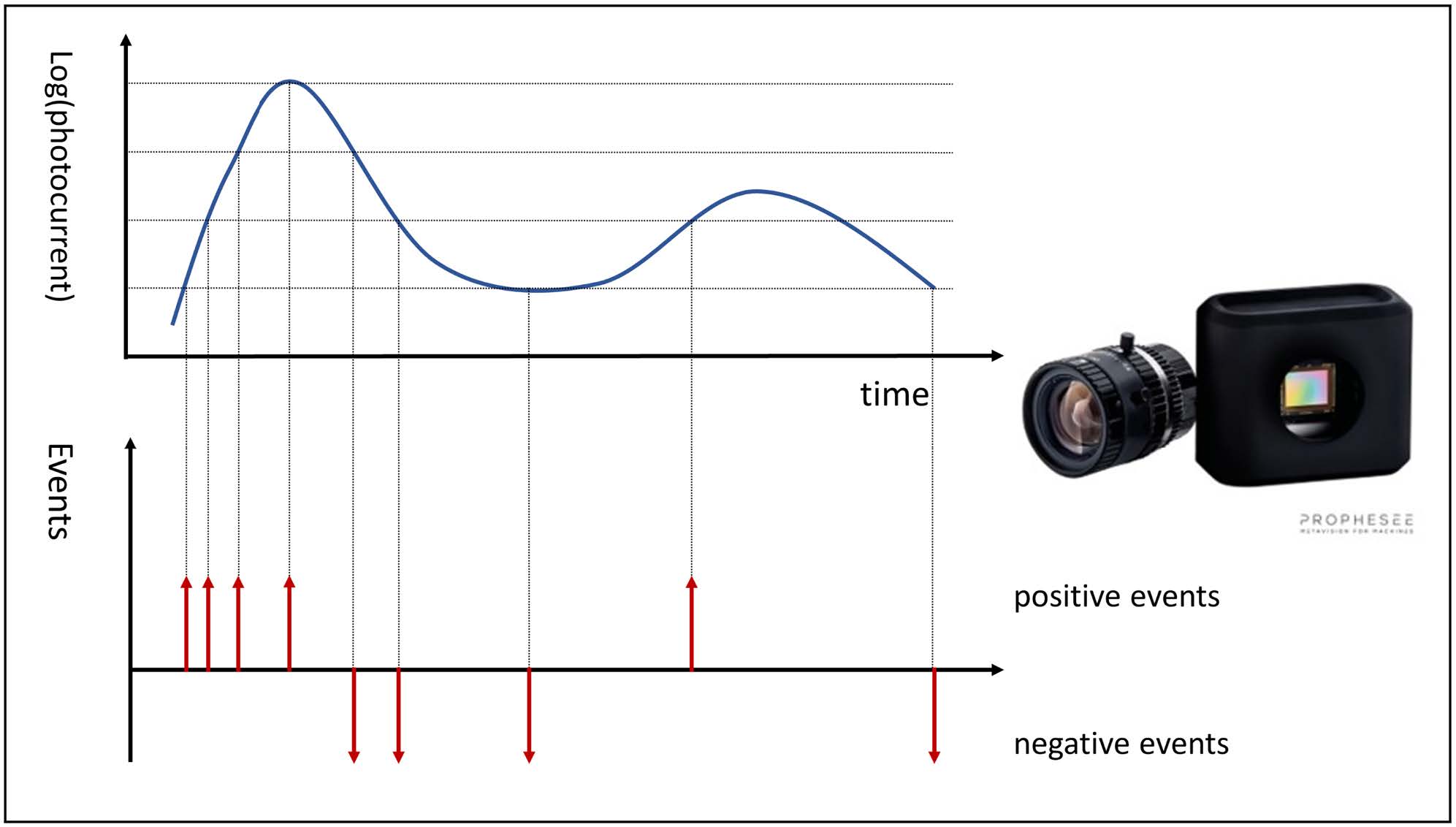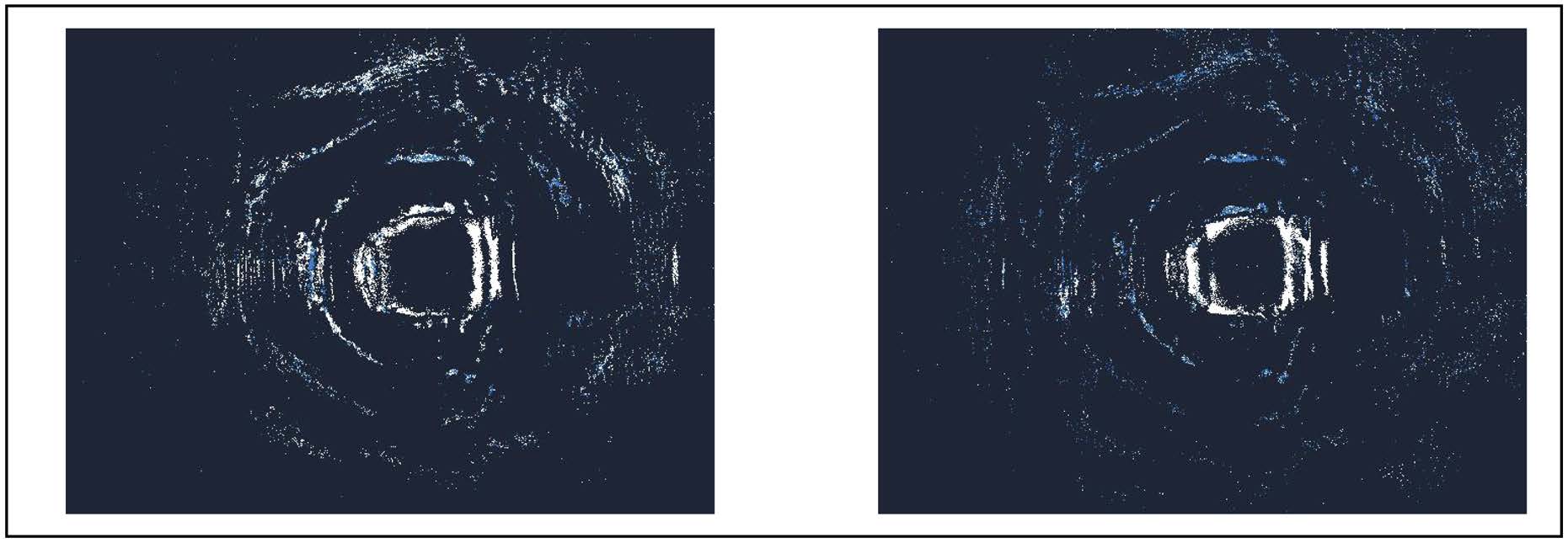High accuracy Classification in Label-Free Flow Cytometry with Event-Based Vision
From 10% to <2%
error rate*
at sub-millisecond latency
High sensitivity
compared to a CMOS camera
Improved classification accuracy
at reduced execution time
WHAT IS FLOW CYTOMETRY?
Flow cytometry is a technology used in the biomedical industry that targets separating different types of cells based on characteristics such as size, shape, or fluorescence.
The technology has been applied in different areas, from the diagnosis of cancer and cancer treatment progression, to microparticles and microalgae classification.
CHALLENGE
Traditionally, the cells used in flow cytometry experiments are initially labeled with different biomarkers. However, labeling cells with biomarkers may lead to chemical interactions with the cell, changing its characteristics and ruining the validity of the results.
In order to avoid this problem, label-free imaging flow cytometry is carried out. A CMOS camera captures thousands of images from light diffracted by flowing cells that have not been labelled. These images are then processed and sent to a traditional image processing or to a machine learning model which is trained to learn how to separate different classes of cells.
Although this method can carry out the task well, it comes with its fair share of issues. A high-speed imaging flow cytometer requires a camera with a high frame rate resulting in huge amounts of data which in turn requires a lot of memory. Another issue is the background noise generated. Although the noise can be tackled by advanced filtering techniques, this adds a computational cost to the system. Thus a more effective mechanism would be to eliminate the noise altogether without relying on the filter.
SOLUTION
An event camera only responds to the dynamics present in a scene. It inherently filters out temporally-redundant information. Moreover, events can be generated on a time scale of microseconds making it suitable to reliably sense the variation of the diffraction pattern caused by the passing particles.
When compared with a CMOS-based system where the error rate is around 10%, the event-based system used in the experiment gave an error rate of 2% with latency at sub-millisecond level. This clearly shows that the hardware-based approach to eliminate background noise, as provided naturally by the event-based camera, is superior to a software-based technique of frame subtraction.
ABOUT GHENT UNIVERSITY
Ghent University was founded in 1817. Over the past 200 years, Ghent University has counted many eminent scientists, ministers and even Nobel laureates among its staff and alumni.
Ghent University is an open, pluralistic and socially engaged university. It is more than 200 years old, offers more than 200 programmes (including 64 English-taught master’s programmes) and conducts in-depth research within a wide range of scientific domains.
ABOUT PROPHESEE INVENTORS COMMUNITY
Since 2014, a network of researchers, start-ups and companies have shown incredible imagination and innovation using Prophesee’s neuromorphic vision technologies.
This has created an Event-Based Vision ecosystem of inventors sharing their work and ideas. Their creativity with Prophesee’s technologies inspires us.
We are gathering them here to inspire future inventors in turn, in the hope that, like the projects here, they create something new together and reveal the invisible.






